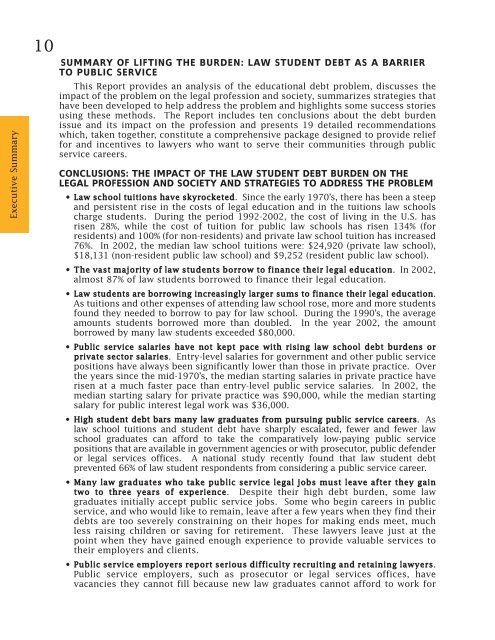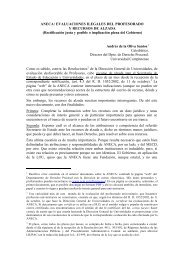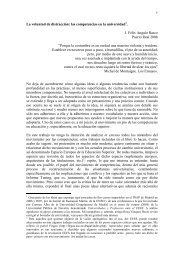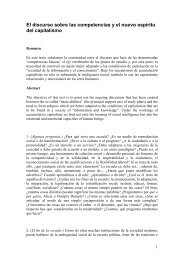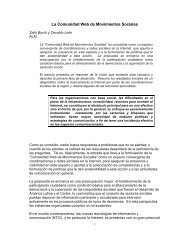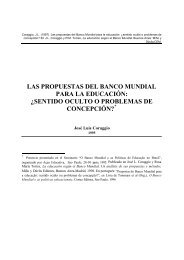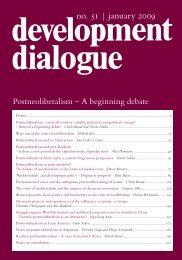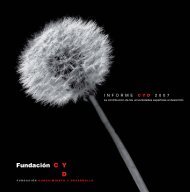Lifting the Burden: Law Student Debt as a Barrier to Public Service
Lifting the Burden: Law Student Debt as a Barrier to Public Service
Lifting the Burden: Law Student Debt as a Barrier to Public Service
Create successful ePaper yourself
Turn your PDF publications into a flip-book with our unique Google optimized e-Paper software.
Executive Summary10SUMMARY OF LIFTING THE BURDEN: LAW STUDENT DEBT AS A BARRIERTO PUBLIC SERVICEThis Report provides an analysis of <strong>the</strong> educational debt problem, discusses <strong>the</strong>impact of <strong>the</strong> problem on <strong>the</strong> legal profession and society, summarizes strategies thathave been developed <strong>to</strong> help address <strong>the</strong> problem and highlights some success s<strong>to</strong>riesusing <strong>the</strong>se methods. The Report includes ten conclusions about <strong>the</strong> debt burdenissue and its impact on <strong>the</strong> profession and presents 19 detailed recommendationswhich, taken <strong>to</strong>ge<strong>the</strong>r, constitute a comprehensive package designed <strong>to</strong> provide relieffor and incentives <strong>to</strong> lawyers who want <strong>to</strong> serve <strong>the</strong>ir communities through publicservice careers.CONCLUSIONS: THE IMPACT OF THE LAW STUDENT DEBT BURDEN ON THELEGAL PROFESSION AND SOCIETY AND STRATEGIES TO ADDRESS THE PROBLEM• <strong>Law</strong> school tuitions have skyrocketed. Since <strong>the</strong> early 1970’s, <strong>the</strong>re h<strong>as</strong> been a steepand persistent rise in <strong>the</strong> costs of legal education and in <strong>the</strong> tuitions law schoolscharge students. During <strong>the</strong> period 1992-2002, <strong>the</strong> cost of living in <strong>the</strong> U.S. h<strong>as</strong>risen 28%, while <strong>the</strong> cost of tuition for public law schools h<strong>as</strong> risen 134% (forresidents) and 100% (for non-residents) and private law school tuition h<strong>as</strong> incre<strong>as</strong>ed76%. In 2002, <strong>the</strong> median law school tuitions were: $24,920 (private law school),$18,131 (non-resident public law school) and $9,252 (resident public law school).• The v<strong>as</strong>t majority of law students borrow <strong>to</strong> finance <strong>the</strong>ir legal education. In 2002,almost 87% of law students borrowed <strong>to</strong> finance <strong>the</strong>ir legal education.• <strong>Law</strong> students are borrowing incre<strong>as</strong>ingly larger sums <strong>to</strong> finance <strong>the</strong>ir legal education.As tuitions and o<strong>the</strong>r expenses of attending law school rose, more and more studentsfound <strong>the</strong>y needed <strong>to</strong> borrow <strong>to</strong> pay for law school. During <strong>the</strong> 1990’s, <strong>the</strong> averageamounts students borrowed more than doubled. In <strong>the</strong> year 2002, <strong>the</strong> amountborrowed by many law students exceeded $80,000.• <strong>Public</strong> service salaries have not kept pace with rising law school debt burdens orprivate sec<strong>to</strong>r salaries. Entry-level salaries for government and o<strong>the</strong>r public servicepositions have always been significantly lower than those in private practice. Over<strong>the</strong> years since <strong>the</strong> mid-1970’s, <strong>the</strong> median starting salaries in private practice haverisen at a much f<strong>as</strong>ter pace than entry-level public service salaries. In 2002, <strong>the</strong>median starting salary for private practice w<strong>as</strong> $90,000, while <strong>the</strong> median startingsalary for public interest legal work w<strong>as</strong> $36,000.•High student debt bars many law graduates from pursuing public service careers. Aslaw school tuitions and student debt have sharply escalated, fewer and fewer lawschool graduates can afford <strong>to</strong> take <strong>the</strong> comparatively low-paying public servicepositions that are available in government agencies or with prosecu<strong>to</strong>r, public defenderor legal services offices. A national study recently found that law student debtprevented 66% of law student respondents from considering a public service career.• Many law graduates who take public service legal jobs must leave after <strong>the</strong>y gaintwo <strong>to</strong> three years of experience. Despite <strong>the</strong>ir high debt burden, some lawgraduates initially accept public service jobs. Some who begin careers in publicservice, and who would like <strong>to</strong> remain, leave after a few years when <strong>the</strong>y find <strong>the</strong>irdebts are <strong>to</strong>o severely constraining on <strong>the</strong>ir hopes for making ends meet, muchless raising children or saving for retirement. These lawyers leave just at <strong>the</strong>point when <strong>the</strong>y have gained enough experience <strong>to</strong> provide valuable services <strong>to</strong><strong>the</strong>ir employers and clients.• <strong>Public</strong> service employers report serious difficulty recruiting and retaining lawyers.<strong>Public</strong> service employers, such <strong>as</strong> prosecu<strong>to</strong>r or legal services offices, havevacancies <strong>the</strong>y cannot fill because new law graduates cannot afford <strong>to</strong> work for


